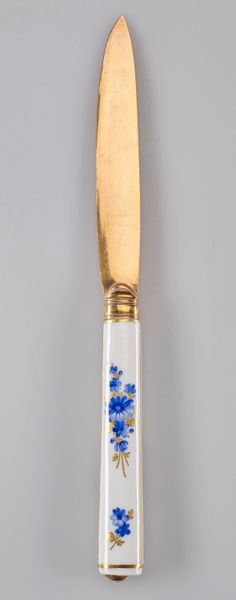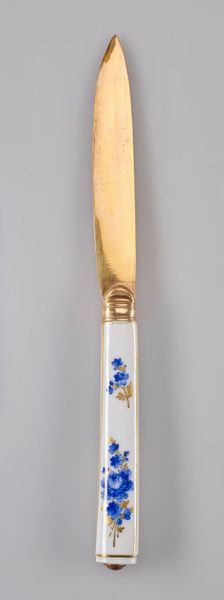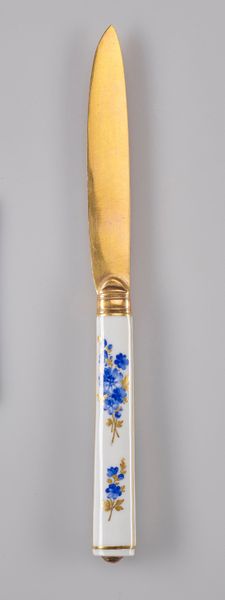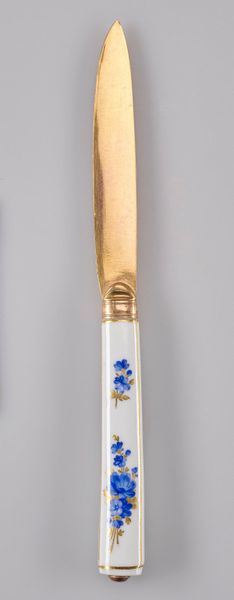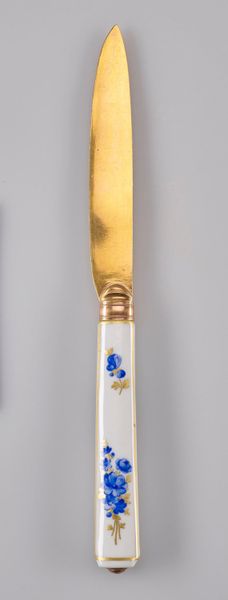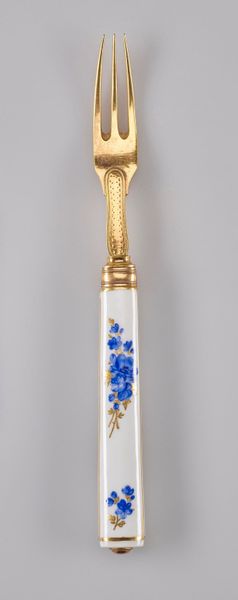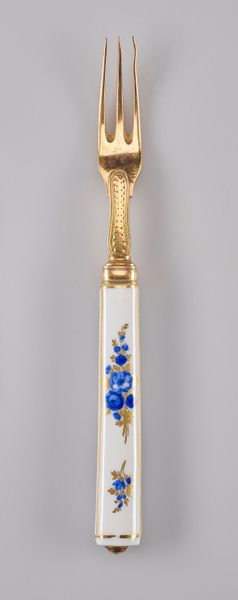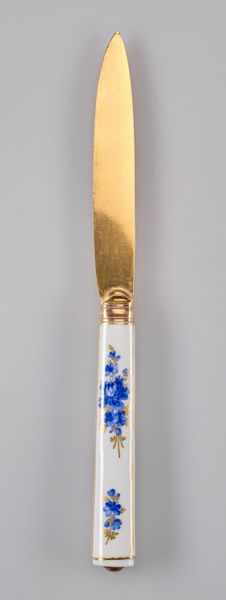
ceramic, porcelain
#
ceramic
#
porcelain
#
decorative-art
#
rococo
Copyright: Public Domain
Here we have a knife made by the Meissen Porcelain Factory, founded in 1710. Meissen porcelain, due to its association with wealth and aristocracy, became enmeshed with displays of power. This knife, with its gilded blade and delicate floral handle, speaks to the increasing refinement of dining and social rituals. In the 18th century, porcelain was known as "white gold" and was a coveted status symbol. Owning such a knife wasn't merely about utility; it signified a certain level of cultural capital. The knife’s floral decorations softened the object's sharp purpose and offered a gentler aesthetic, reflecting the rococo period's love for nature and ornamentation. Consider the hands that would have held this knife: Were they manicured hands at a royal banquet or the hands of someone aspiring to such elegance? This object isn't just a tool; it's a reflection of the era's obsession with status, beauty, and the performance of identity.
Comments
No comments
Be the first to comment and join the conversation on the ultimate creative platform.
